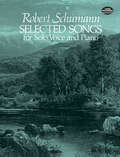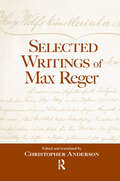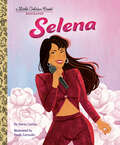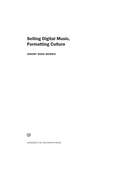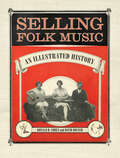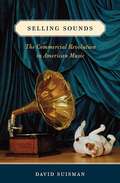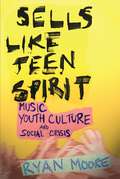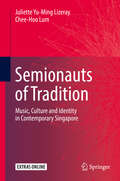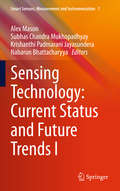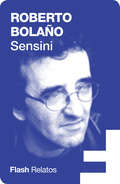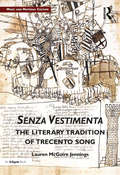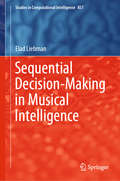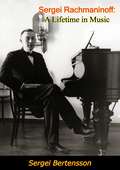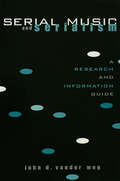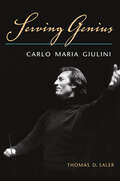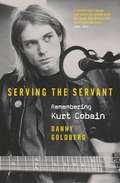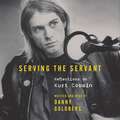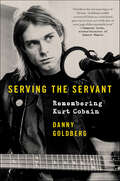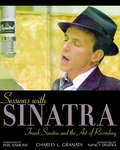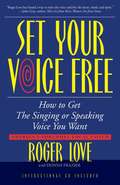- Table View
- List View
Selected Songs for Solo Voice and Piano (Dover Song Collections)
by Robert SchumannAn authoritative compilation of more than 100 of the great composer's Lieder, this volume features well-beloved melodies set to the poetry of Heine, Goethe, Burns, Byron, and others. Reprinted from the Breitkopf and Härtel edition edited by Clara Schumann, it includes new translations of lyrics and a glossary of German musical terms.
Selected Writings of Max Reger
by Christopher AndersonMax Reger (1873-1916) was a celebrated German composer, performer on piano and organ, and conductor. Well known for his compositions for keyboards and orchestra, Reger worked during the crucial decades when Western music transformed itself from the misty veil of Romanticism and Impressionism to the more hard-edged modernism that would prevail in the 20th century. Less well known are his writings about music and the composer's craft. Although he wrote a major book on music theory published in 1903 (and translated into English a year later), his extended essays on composition, his fellow composers, and analysis have never appeared before in English. Christopher Anderson, a noted Reger scholar, has gone back to original manuscripts as well as the published versions of these writings to produce definitive new texts. Additionally, Anderson has written an opening essay placing Reger's writings and music in the context of his time. This volume will appeal strongly to those interested in the Late Romantic era, musical composition and aesthetics, and of course those interested in the music and life of Reger
Selena, reina de la música tejana
by Silvia LópezThis is a moving and impassioned picture book about the iconic Queen of Tejano music, Selena Quintanilla, that will embolden young readers to find their passion and make the impossible, possible! En Español!Selena Quintanilla's music career began at the age of nine when she started singing in her family's band. She went from using a hairbrush as a microphone to traveling from town to town to play gigs. But Selena faced a challenge: People said that she would never make it in Tejano music, which was dominated by male performers. Selena was determined to prove them wrong.Born and raised in Texas, Selena didn't know how to speak Spanish, but with the help of her dad, she learned to sing it. With songs written and composed by her older brother, and the fun dance steps Selena created, her band, Selena Y Los Dinos, rose to stardom! A true trailblazer, her success in Tejano music and her crossover into mainstream American music opened the door for other Latinx entertainers, and she became an inspiration for Latina girls everywhere.
Selena: A Little Golden Book Biography (Little Golden Book)
by Maria CorreaHelp your little one dream big with a Little Golden Book biography about Selena, the Queen of Tejano music. Little Golden Book biographies are the perfect introduction to nonfiction for young readers—as well as fans of all ages!This Little Golden Book about Selena Quintanilla—the Grammy Award winning Mexican-American singer who became known as the beloved icon of Tejano music and culture—is an inspiring read-aloud for young children, as well as their parents and grandparents who are fans.Look for more Little Golden Book biographies:Frida KahloRita MorenoBeyoncéTaylor SwiftLady Gaga
Selling Digital Music, Formatting Culture
by Jeremy Wade MorrisSelling Digital Music, Formatting Culture documents the transition of recorded music on CDs to music as digital files on computers. More than two decades after the first digital music files began circulating in online archives and playing through new software media players, we have yet to fully internalize the cultural and aesthetic consequences of these shifts. Tracing the emergence of what Jeremy Wade Morris calls the "digital music commodity," Selling Digital Music, Formatting Culture considers how a conflicted assemblage of technologies, users, and industries helped reformat popular music's meanings and uses. Through case studies of five key technologies--Winamp, metadata, Napster, iTunes, and cloud computing--this book explores how music listeners gradually came to understand computers and digital files as suitable replacements for their stereos and CD. Morris connects industrial production, popular culture, technology, and commerce in a narrative involving the aesthetics of music and computers, and the labor of producers and everyday users, as well as the value that listeners make and take from digital objects and cultural goods. Above all, Selling Digital Music, Formatting Culture is a sounding out of music's encounters with the interfaces, metadata, and algorithms of digital culture and of why the shifting form of the music commodity matters for the music and other media we love.
Selling Folk Music: An Illustrated History (American Made Music Series)
by Ronald D. Cohen David BonnerSelling Folk Music: An Illustrated History highlights commercial sources that reveal how folk music has been packaged and sold to a broad, shifting audience in the United States. Folk music has a varied and complex scope and lineage, including the blues, minstrel tunes, Victorian parlor songs, spirituals and gospel tunes, country and western songs, sea shanties, labor and political songs, calypsos, pop folk, folk-rock, ethnic, bluegrass, and more. The genre is of major importance in the broader spectrum of American music, and it is easy to understand why folk music has been marketed as America's music. Selling Folk Music presents the public face of folk music in the United States via its commercial promotion and presentation throughout the twentieth century. Included are concert flyers; sheet music; book, songbook, magazine, and album covers; concert posters and flyers; and movie lobby cards and posters, all in their original colors. The 1964 hootenanny craze, for example, spawned such items as a candy bar, pinball machine, bath powder, paper dolls, Halloween costumes, and beach towels. The almost five hundred images in Selling Folk Music present a new way to catalog the history of folk music while highlighting the transformative nature of the genre. Following the detailed introduction on the history of folk music, illustrations from commercial products make up the bulk of the work, presenting a colorful, complex history.
Selling Sounds: The Commercial Revolution in American Music
by David SuismanFrom Tin Pan Alley to grand opera, player-pianos to phonograph records, David Suisman's Selling Sounds explores the rise of music as big business and the creation of a radically new musical culture. Around the turn of the twentieth century, music entrepreneurs laid the foundation for today's vast industry, with new products, technologies, and commercial strategies to incorporate music into the daily rhythm of modern life. Popular songs filled the air with a new kind of musical pleasure, phonographs brought opera into the parlor, and celebrity performers like Enrico Caruso captivated the imagination of consumers from coast to coast. Selling Sounds uncovers the origins of the culture industry in music and chronicles how music ignited an auditory explosion that penetrated all aspects of society. It maps the growth of the music business across the social landscape -- in homes, theaters, department stores, schools -- and analyzes the effect of this development on everything from copyright law to the sensory environment. While music came to resemble other consumer goods, its distinct properties as sound ensured that its commercial growth and social impact would remain unique. Today, the music that surrounds us -- from iPods to ring tones to Muzak -- accompanies us everywhere from airports to grocery stores. The roots of this modern culture lie in the business of popular song, player-pianos, and phonographs of a century ago. Provocative, original, and lucidly written, Selling Sounds reveals the commercial architecture of America's musical life.
Sellout: The Major-Label Feeding Frenzy That Swept Punk, Emo, and Hardcore (1994–2007)
by Dan OzziA raucous history of punk, emo, and hardcore’s growing pains during the commercial boom of the early 90s and mid-aughts, following eleven bands as they “sell out” and find mainstream fame, or break beneath the weight of it all <p><p> Punk rock found itself at a crossroads in the mid-90’s. After indie favorite Nirvana catapulted into the mainstream with its unexpected phenomenon, Nevermind, rebellion was suddenly en vogue. Looking to replicate the band’s success, major record labels set their sights on the underground, and began courting punk’s rising stars. But the DIY punk scene, which had long prided itself on its trademark authenticity and anti-establishment ethos, wasn’t quite ready to let their homegrown acts go without a fight. The result was a schism: those who accepted the cash flow of the majors, and those who defiantly clung to their indie cred. <p> In Sellout, seasoned music writer Dan Ozzi chronicles this embattled era in punk. Focusing on eleven prominent bands who made the jump from indie to major, Sellout charts the twists and turns of the last “gold rush” of the music industry, where some groups “sold out” and rose to surprise super stardom, while others buckled under mounting pressures. Sellout is both a gripping history of the music industry’s evolution, and a punk rock lover’s guide to the chaotic darlings of the post-grunge era, featuring original interviews and personal stories from members of modern punk’s most (in)famous bands.
Sells like Teen Spirit: Music, Youth Culture, and Social Crisis
by Ryan MooreThis account of modern rock music &“skillfully articulates the brutal social truths that compel young people to create meaning and subculture out of chaos&” (Donna Gaines, author of Teenage Wasteland). In Sells Like Teen Spirit, Ryan Moore tells the story of how music and youth culture have changed along with the economic, political, and cultural transformations of American society over four decades. By attending concerts, hanging out in dance clubs and after-hour bars, and examining the do-it-yourself music scene, Moore gives a riveting, first-hand account of the sights, sounds, and smells of &“teen spirit.&” Moore traces the histories of punk, hardcore, heavy metal, glam, thrash, alternative rock, grunge, and riot grrrl music, and relates them to wider social changes that have taken place. Alongside the thirty images of concert photos, zines, flyers, and album covers in the book, Moore offers original interpretations of the music of a wide range of bands including Black Sabbath, Black Flag, Metallica, Nirvana, and Sleater-Kinney. Written in a lively, witty style, Sells Like Teen Spiritsuggests a more hopeful attitude about the ways that music can be used as a counter to an overly commercialized culture, showcasing recent musical innovations by youth that emphasize democratic participation and creative self-expression—even at the cost of potential copyright infringement. &“Brilliantly situates the histories of several musical styles within the political, economic, and social changes that led to the development of an assortment of rock subgenres . . . engaging.&” —Journal of Youth and Adolescence
Semionauts of Tradition: Music, Culture and Identity in Contemporary Singapore
by Chee-Hoo Lum Juliette Yu-Ming LizerayThis book explores questions of identity, cultural change and creativity from the perspective of contemporary musicians currently engaged in redefining Asian musical traditions and notions of heritage in Singapore. Drawing on the fields of anthropology, cultural studies, and ethnomusicology, Semionauts of Tradition focuses on emerging millennial musicians and explores the complex and interwoven cultural, national, musical, and personal identifications in their discourse and music practice. It shows how they create fluid, hybrid and counter-hegemonic forms of expression, representation and identity through their navigation of diverse cultural worlds, their incorporation of a myriad of elements into their own identities and music, and their contestations of preconceived notions of difference and tradition. The book exposes paradoxes within current thinking about ‘multiracialism’, ‘racial harmony’, the ‘East/West divide’ and ‘tradition versus modernity,’ and proposes new ways of understanding identity, cultural change and creativity in a highly globalised, and diverse nation. This highly-original polyvocal account of a burgeoning music scene includes photos, musical scores and reaction pieces by musicians. It is a timely contribution to global discussions about ‘multiculturalism from below,’ as well as musical, cultural and national identities in a postcolonial Southeast Asian setting, from the viewpoint of artists engaged in creative meaning-making. "This captivating book explores - with tremendous intellectual vitality - the dialectic relationships between the cultural, ethnic and national identities of Singapore’s creative youth, and their creative practice. A compelling read!" Dr Liora Bresler, Professor, University of Illinois "A well-researched and thoughtfully well-written book about the diverse forms of music in Singapore and the musicians who created it." - Jeremy Monteiro, jazz pianist, singer, composer, and music educator "This wonderfully lucid and compelling book analyzes the musical and cultural creativity of young Singaporean musicians growing up in a multicultural and ethnically plural society, bringing Asian and Western musical cultures into creative dialogue." - Dr Deborah Pacini Hernandez, Professor Emeritus, Tufts University "A thought provoking dialogue on contemporary Singaporean music!" -Eric Watson, composer, conductor, music technologist and pedagogue
Sensing Sound: Singing and Listening as Vibrational Practice
by Nina Sun EidsheimIn Sensing Sound Nina Sun Eidsheim offers a vibrational theory of music that radically re-envisions how we think about sound, music, and listening. Eidsheim shows how sound, music, and listening are dynamic and contextually dependent, rather than being fixed, knowable, and constant. She uses twenty-first-century operas by Juliana Snapper, Meredith Monk, Christopher Cerrone, and Alba Triana as case studies to challenge common assumptions about sound--such as air being the default medium through which it travels--and to demonstrate the importance a performance's location and reception play in its contingency. By theorizing the voice as an object of knowledge and rejecting the notion of an a priori definition of sound, Eidsheim releases the voice from a constraining set of fixed concepts and meanings. In Eidsheim's theory, music consists of aural, tactile, spatial, physical, material, and vibrational sensations. This expanded definition of music as manifested through material and personal relations suggests that we are all connected to each other in and through sound. Sensing Sound will appeal to readers interested in sound studies, new musicology, contemporary opera, and performance studies.
Sensing Technology: Current Status and Future Trends II
by Subhas Chandra Mukhopadhyay Alex Mason Krishanthi Padmarani Jayasundera Nabarun BhattacharyyaThis book is written for academic and industry professionals working in the field of sensing, instrumentation and related fields, and is positioned to give a snapshot of the current state of the art in sensing technology, particularly from the applied perspective. The book is intended to give broad overview of the latest developments, in addition to discussing the process through which researchers go through in order to develop sensors, or related systems, which will become more widespread in the future.
Sensini
by Roberto BolañoUna amistad epistolar entre dos escritores exiliados que unen lazos gracias a los concursos literarios. Sensini, es el cuento que inicia la obra Llamadas telefónicas, de Roberto Bolaño. Es la historia de la amistad entre dos escritores, nacida de la admiración y el respeto mutuo. La búsqueda del reconocimiento y la lucha por salir de la pobreza a través de la escritura son las claves que enmarcan este característico relato.
Sentimental Opera
by Stefano CastelvecchiSentimental Opera is a study of the relationship between opera and two major phenomena of eighteenth-century European culture - the cult of sensibility and the emergence of bourgeois drama. A thorough examination of social and cultural contexts helps to explain the success of operas such as Paisiello's Nina as well as the extreme emotional reactions of their audiences. Like their counterparts in drama, literature and painting, these works brought to the fore serious contemporary problems including the widespread execution of deserters, the treatment of the insane, and anxieties relative to social and familial roles. They also developed a specifically operatic version of the dominant language of sensibility. This wide-ranging study involves such major cultural figures as Goldoni, Diderot and Mozart, while refining our understanding of the theatrical genre system of their time.
Senza Vestimenta: The Literary Tradition Of Trecento Song The Literary Tradition Of Trecento Song (Music and Material Culture)
by Lauren JenningsThe metaphor of marriage often describes the relationship between poetry and music in both medieval and modern writing. While the troubadours stand out for their tendency to blur the distinction between speaking and singing, between poetry and song, a certain degree of semantic slippage extends into the realm of Italian literature through the use of genre names like canzone, sonetto, and ballata. Yet, paradoxically, scholars have traditionally identified a 'divorce' between music and poetry as the defining feature of early Italian lyric. Senza Vestimenta reintegrates poetic and musical traditions in late medieval Italy through a fresh evaluation of more than fifty literary sources transmitting Trecento song texts. These manuscripts have been long noted by musicologists, but until now they have been used to bolster rather than to debunk the notion that so-called 'poesia per musica' was relegated to the margins of poetic production. Jennings revises this view by exploring how scribes and readers interacted with song as a fundamentally interdisciplinary art form within a broad range of literary settings. Her study sheds light on the broader cultural world surrounding the reception of the Italian ars nova repertoire by uncovering new, diverse readers ranging from wealthy merchants to modest artisans.
Sequential Decision-Making in Musical Intelligence (Studies in Computational Intelligence #857)
by Elad LiebmanOver the past 60 years, artificial intelligence has grown from an academic field of research to a ubiquitous array of tools used in everyday technology. Despite its many recent successes, certain meaningful facets of computational intelligence have yet to be thoroughly explored, such as a wide array of complex mental tasks that humans carry out easily, yet are difficult for computers to mimic. A prime example of a domain in which human intelligence thrives, but machine understanding is still fairly limited, is music. Over recent decades, many researchers have used computational tools to perform tasks like genre identification, music summarization, music database querying, and melodic segmentation. While these are all useful algorithmic solutions, we are still a long way from constructing complete music agents able to mimic (at least partially) the complexity with which humans approach music. One key aspect that hasn't been sufficiently studied is that of sequential decision-making in musical intelligence. Addressing this gap, the book focuses on two aspects of musical intelligence: music recommendation and multi-agent interaction in the context of music. Though motivated primarily by music-related tasks, and focusing largely on people's musical preferences, the work presented in this book also establishes that insights from music-specific case studies can also be applicable in other concrete social domains, such as content recommendation.Showing the generality of insights from musical data in other contexts provides evidence for the utility of music domains as testbeds for the development of general artificial intelligence techniques.Ultimately, this thesis demonstrates the overall value of taking a sequential decision-making approach in settings previously unexplored from this perspective.
Sergei Rachmaninoff: A Lifetime in Music (Russian Music Studies)
by Sergei BertenssonThroughout his career as composer, conductor, and pianist, Sergei Rachmaninoff (1873-1943) was an intensely private individual. When Bertensson and Leyda’s 1956 biography appeared, it lifted the veil of secrecy from several areas of Rachmaninoff’s life, especially concerning the genesis of his compositions and how their critical reception affected him.The authors consulted a number of people who knew Rachmaninoff, who worked with him, and who corresponded with him. Even with the availability of such sources and full access to the Rachmaninoff Archive at the Library of Congress, Bertensson and Leyda were tireless in their pursuit of privately held documents, particularly correspondence. The wonderfully engaging product of their labors masterfully incorporates primary materials into the narrative.Almost half a century after it first appeared, this volume remains essential reading.Sergei Bertensson, who knew Rachmaninoff, published other works on music and film, often with a documentary emphasis.
Serial Music and Serialism: A Research and Information Guide (Routledge Music Bibliographies #Vol. 22)
by John D. Vander WegFirst Published in 2001. Routledge is an imprint of Taylor & Francis, an informa company.
Serious Music -- and All That Jazz!
by Henry PleasantsContinues to develop themes introduced in The Agony of Modern Music. In this book music critic Henry Pleasants explores the development of popular music and jazz, speculates on why the gap between performer and audience has grown, and theorizes about what the future may bring.
Serving Genius: Carlo Maria Giulini
by Thomas D SalerServing Genius tells the life story of Carlo Maria Giulini, one of the most renowned and beloved conductors of the twentieth century. Detailing Giulini's extraordinary professional career, Thomas D. Saler also chronicles Giulini's personal life, including his musical awakening while growing up amid the spectacular beauty of the Dolomite mountains, his years as a student in Rome's Academy of St. Cecilia, his conscription into the Italian army during World War II, his nine months in hiding for his anti-fascist and pacifist beliefs, and his selfless devotion to his wife, Marcella. A humble master who shunned the limelight, Giulini took a deeply emotional and subjective approach to making music. Saler provides uniquely detailed analysis of Giulini's nuanced musicianship and the way he conveyed that musicianship to the orchestra through physical gestures. Meditating on the very art of conducting at which Giulini excelled, Saler discusses each of the conductor's major musical appointments, including stints with the Chicago Symphony Orchestra, Philharmonia Orchestra, Vienna Symphony, and Los Angeles Philharmonic. The book also addresses his repertoire of choice, leadership style, and moral framework. Drawing on extensive interviews with Giulini's family, music critics, arts administrators, orchestra members, and collaborating soloists, Serving Genius draws out the personal amid the professional life of this giant among twentieth-century conductors.
Serving The Servant: Remembering Kurt Cobain
by Danny GoldbergIn early 1991, top music manager Danny Goldberg agreed to take on Nirvana, a critically acclaimed new band from the underground music scene in Seattle. He had no idea that the band's leader, Kurt Cobain, would become a pop-culture icon with a legacy arguably at the level of John Lennon, Michael Jackson, or Elvis Presley. Danny worked with Kurt from 1990 to 1994, the most impactful period of Kurt's life. This key time saw the stratospheric success of Nevermind turn Nirvana into the most successful rock band in the world and make punk and grunge household names; Kurt met and married the brilliant but mercurial Courtney Love and their relationship became a lightning rod for critics; their daughter Frances Bean was born; and, finally, Kurt's public struggles with addiction ended in a devastating suicide that would alter the course of rock history. Throughout, Danny stood by Kurt's side as manager, and close friend.Drawing on Danny's own memories of Kurt, files which previously have not been made public, and interviews with, among others, Kurt's close family, friends and former bandmates, Serving the Servant sheds an entirely new light on these critical years. Casting aside the common obsession with the angst and depression that seemingly drove Kurt, Serving the Servant is an exploration of his brilliance in every aspect of rock and roll, his compassion, his ambition, and the legacy he wrought - one that has lasted decades longer than his career did. Danny Goldberg explores what it is about Kurt Cobain that still resonates today, even with a generation who wasn't alive until after Kurt's death. In the process, he provides a portrait of an icon unlike any that have come before.
Serving The Servant: Remembering Kurt Cobain
by Danny GoldbergIn early 1991, top music manager Danny Goldberg agreed to take on Nirvana, a critically acclaimed new band from the underground music scene in Seattle. He had no idea that the band's leader, Kurt Cobain, would become a pop-culture icon with a legacy arguably at the level of John Lennon, Michael Jackson, or Elvis Presley. Danny worked with Kurt from 1990 to 1994, the most impactful period of Kurt's life. This key time saw the stratospheric success of Nevermind turn Nirvana into the most successful rock band in the world and make punk and grunge household names; Kurt met and married the brilliant but mercurial Courtney Love and their relationship became a lightning rod for critics; their daughter Frances Bean was born; and, finally, Kurt's public struggles with addiction ended in a devastating suicide that would alter the course of rock history. Throughout, Danny stood by Kurt's side as manager, and close friend.Drawing on Danny's own memories of Kurt, files which previously have not been made public, and interviews with, among others, Kurt's close family, friends and former bandmates, Serving the Servant sheds an entirely new light on these critical years. Casting aside the common obsession with the angst and depression that seemingly drove Kurt, Serving the Servant is an exploration of his brilliance in every aspect of rock and roll, his compassion, his ambition, and the legacy he wrought - one that has lasted decades longer than his career did. Danny Goldberg explores what it is about Kurt Cobain that still resonates today, even with a generation who wasn't alive until after Kurt's death. In the process, he provides a portrait of an icon unlike any that have come before.
Serving the Servant: Remembering Kurt Cobain
by Danny GoldbergNATIONAL BESTSELLEROn the twenty-fifth anniversary of Kurt Cobain’s death comes a new perspective on one of the most compelling icons of our timeIn early 1991, top music manager Danny Goldberg agreed to take on Nirvana, a critically acclaimed new band from the underground music scene in Seattle. He had no idea that the band’s leader, Kurt Cobain, would become a pop-culture icon with a legacy arguably at the level of that of John Lennon, Michael Jackson, or Elvis Presley. Danny worked with Kurt from 1990 to 1994, the most impactful period of Kurt’s life. This key time saw the stratospheric success of Nevermind, which turned Nirvana into the most successful rock band in the world and made punk and grunge household terms; Kurt’s meeting and marriage to the brilliant but mercurial Courtney Love and their relationship that became a lightning rod for critics; the birth of their daughter, Frances Bean; and, finally, Kurt’s public struggles with addiction, which ended in a devastating suicide that would alter the course of rock history. Throughout, Danny stood by Kurt’s side as manager, and close friend. Drawing on Goldberg’s own memories of Kurt, files that previously have not been made public, and interviews with, among others, Kurt’s close family, friends, and former bandmates, Serving the Servants sheds an entirely new light on these critical years. Casting aside the common obsession with the angst and depression that seemingly drove Kurt, Serving the Servants is an exploration of his brilliance in every aspect of rock and roll, his compassion, his ambition, and the legacy he wrought—one that has lasted decades longer than his career did. Danny Goldberg explores what it is about Kurt Cobain that still resonates today, even with a generation who wasn’t alive until after Kurt’s death. In the process, he provides a portrait of an icon unlike any that has come before.
Sessions with Sinatra: Frank Sinatra and the Art of Recording
by Phil Ramone Nancy Sinatra Charles L. GranataFeaturing 100 photographs of Frank Sinatra working with orchestras and arrangers, listening to playbacks, and, of course, singing, this book tells the whole story of how he created the Sinatra sound and translated the most intense personal emotions into richly worked-out songs of unrivalled expressiveness. One of the thrills of listening to Sinatra is wondering how he did it--and this book explains it all, bringing the dedicated fan and the casual music lover alike into the recording studio to witness the fascinating working methods he introduced and mastered in his quest for recorded perfection. Revealed is how, in addition to introducing and perfecting a unique vocal style, Sinatra was also his own in-studio producer--personally supervising every aspect of his recordings, from choosing the songs and arrangers to making minute adjustments in microphone placement.
Set Your Voice Free
by Roger Love Donna FrazierInternationally acclaimed for his work as a vocal coach to a wide range of top recording artists and celebrities -- among them Eminem, Wilson Phillips, Smashing Pumpkins, Al Jarreau, the Beach Boys, Phish, Billy Idol, Tyra Banks, Billy Baldwin, Alicia Silverstone, and many others -- Roger Love has pioneered a technique that effectively connects speakers and singers to parts of their voice they've never used before. Whether your goal is to carry a tune, expand your vocal range, or speak with ease and confidence before an audience, Roger Love provides you with exactly the help you need. Through the innovative techniques and enjoyable exercises in this book and accompanying CD, Love demonstrates how you can strengthen your "middle voice" and navigate smoothly through several octaves without pressure or strain. Set Your Voice Free holds the key to vocal success and satisfaction -- it's like professional voice lessons in book form.
